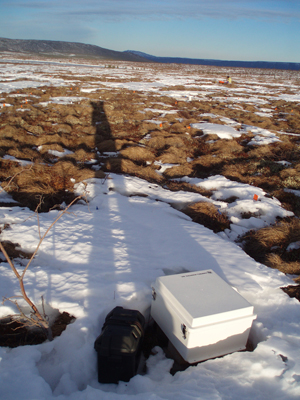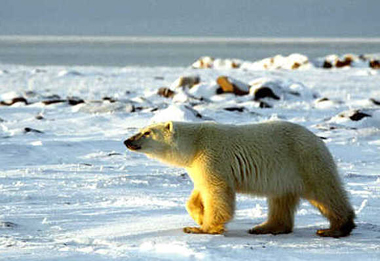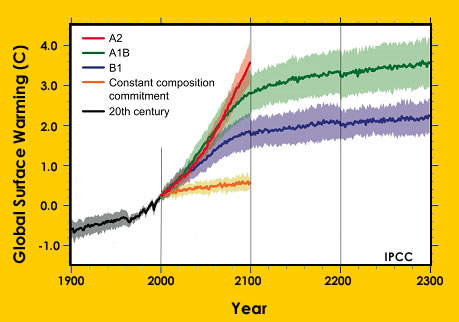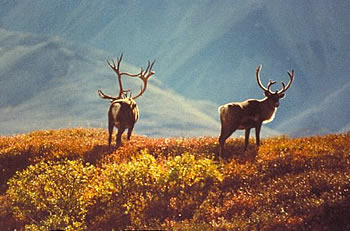Click on image for full size
Courtesy of Ted Schuur
Arctic Tundra May Contribute to Warmer World
News story originally written on May 27, 2009
In 20 years of studying the Alaskan tundra, scientist Ted Schuur and his team have seen the frozen soil in their study area thaw, turning from hard ground to soft mud.
All over the Arctic, frozen soil, called permafrost, is thawing because of global warming. The team studied how the plants and soil change as permafrost thaws. Recently they have been developing new ways to monitor how thawing soil affects greenhouse gases in the atmosphere.
There is a large amount of carbon stored in the permafrost. The carbon built up in the soil over thousands of years from the remains of dead plants and animals which couldn’t decompose in frozen conditions. Today, as the soil thaws, carbon can be released into the atmosphere, increasing the amount of greenhouse gases.
A positive feedback to climate change happens when global warming causes something that, in turn, causes more warming. The process of a warmer climate causing permafrost thaw, which releases carbon to the atmosphere, which warms climate even more is an example of a positive feedback to climate change.
Carbon moves through different living and non-living parts of ecosystems in the carbon cycle, one of the biogeochemical cycles. The researchers wondered how carbon that has been in the frozen soils for hundreds to thousands of years, moved around the carbon cycle differently than carbon that was recently taken in by a plant. They used radiocarbon dating to figure out where old carbon moves in the carbon cycle as permafrost thaws.
Their results showed that when permafrost first begins to thaw, more plants are able to grow. The plants remove carbon from the atmosphere through the process of photosynthesis. This makes the amount of carbon taken out of the atmosphere greater than the amount added to the atmosphere from the soil. But the pattern does not continue this way. With more thawing, more carbon is added to the atmosphere than is taken out by plants.
This information is helping scientists make predictions about how much carbon will be released to the atmosphere from Arctic tundra in the future.















